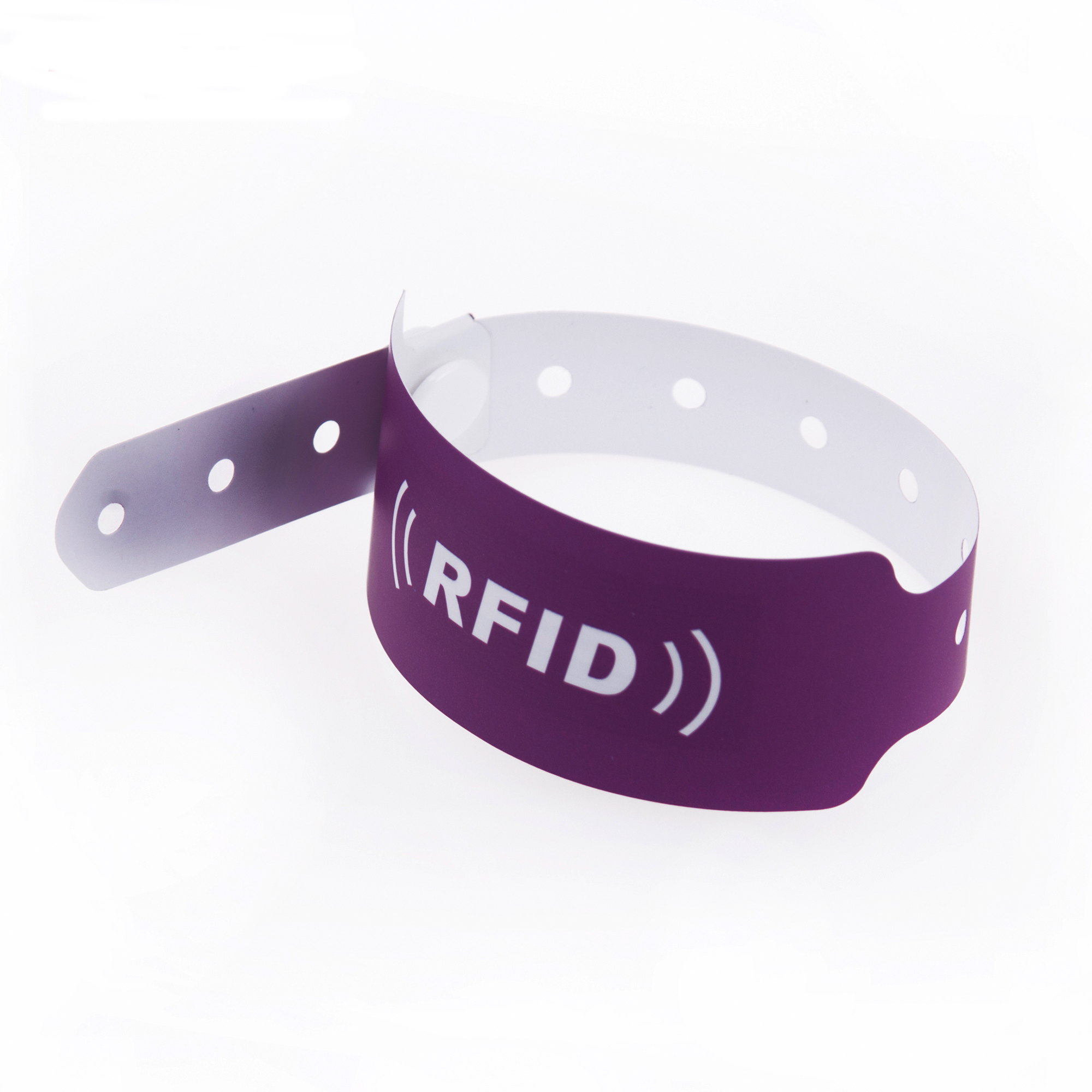
Hospital bracelets are an essential component of patient care and hospital administration. These small, seemingly insignificant bands play a crucial role in accurately identifying patients and ensuring their safety within a healthcare facility.
This article delves into the history, benefits, and uses of the humble hospital bracelet. It also covers the different color coding utilized by hospitals for a more efficient patient tracking, as well as the different materials that are currently offered by Wristband Creation, one of the leading suppliers of customized wristbands.
What’s the History Behind Hospital Bracelets?
The use of hospital bracelets for patient identification can be traced back to the late 1940s when the wristband barcode system was first invented. Hospitals recognized the need for a reliable and efficient method of identifying patients, which led to the adoption of wristbands as a form of identification. Since then, wristbands have become a commonplace feature in hospitals worldwide.
These wristbands have evolved over time, incorporating advancements in technology and materials. They have become more durable, tamper-resistant, and customizable to meet the specific needs of different healthcare facilities. Wristbands have proven to be invaluable tools in ensuring patient safety, preventing medical errors, and streamlining healthcare processes.
Why Do Hospitals Use Bracelets?
Hospitals utilize bracelets, like medical wristbands, to address multiple important objectives. Firstly, hospital bracelets ensure accurate patient identification. With a patient’s name and other essential details clearly displayed on the bracelet, healthcare professionals can confidently identify patients and match them with their medical records. This reduces the risk of misidentification and medical errors.
Secondly, hospital bracelets enhance patient safety by serving as a constant reminder of specific medical conditions, allergies, or other pertinent information. Imagine, for instance, having to treat an unconscious patient who has drug allergy. Aside from reading their chart, a quick glance at their properly color-coded wristband is all that it takes to avoid an allergic reaction that could compound their illness or injury.
Additionally, hospital bracelets streamline administrative processes and workflow within healthcare facilities. They facilitate the efficient tracking of patients, their movements, and their treatment progress, enabling better coordination among healthcare providers and enhancing overall hospital operations.

How Do Different Hospitals Use Bracelets?
Hospitals employ different approaches to using bracelets based on their specific needs and patient populations. Some hospitals opt for universal bracelets that are worn by all patients, while others may reserve their use for certain units or patient categories, such as newborns, pediatric patients, or those with specific medical conditions.
Case studies have demonstrated the effectiveness of hospital bracelets in improving patient outcomes. For instance, a meta-analysis study published on the National Library of Medicine indicated that the use of a bar-coded hospital wristband helps reduce medical errors by as much as 57.5 percent. By scanning the barcode, healthcare professionals can quickly access the patient’s medication history and ensure accurate administration.
What Information Is Included in Hospital Bracelets?
Hospital bracelets contain critical patient information that is essential for proper identification and care. These details typically include the patient’s full name, date of birth, and a unique identifier such as a medical record number.
Additionally, bracelets may display allergy information, specific medical conditions, current medications, blood type, and emergency contact details. This comprehensive information aids healthcare providers in making informed decisions and delivering appropriate treatment.
What Are the Standard Hospital Color Wristband Codes and Their Meaning?
To further enhance patient safety, many hospitals employ color-coded wristbands to communicate specific risks or conditions at a glance. That’s why implementing standardized colors for patient alert wristbands has become an important aspect of hospital safety protocols. With a uniform color coding for all hospitals in the country, confusion and potential errors can be minimized, especially for caregivers working in multiple facilities.
While many hospital associations have taken the initiative to adopt standardized colors for patient wristbands, the American Hospital Association (AHA) advocates for the use of three consensus colors. The adopted colors, which have gained widespread acceptance, are red for patient allergies, yellow for fall risk, and purple for do-not-resuscitate patient preferences. This standardized approach aims to improve patient safety and promote clear communication among healthcare providers, ensuring a more effective and consistent response to patient risks or conditions.
AHA’s Consensus Colors:
- Red for Allergy Alert – Indicates the patient has known allergies that healthcare providers need to be aware of to avoid triggering adverse reactions.
- Yellow for Fall Risk – Identifies patients who are at a higher risk of falling, prompting healthcare professionals to implement necessary precautions.
- Purple for Do Not Resuscitate (DNR) – Communicates the patient’s wish to forego resuscitation in the event of cardiac or respiratory arrest.
Additional Color Codes Implemented by Various Hospital Associations:
- Green for Latex Allergy – Indicates a severe latex allergy, alerting medical staff to avoid using latex-based products during treatment.
- Blue for Restricted Limb – Highlights a limb that requires special attention or precautionary measures due to injury or a medical condition.
- Pink for Allergic to Penicillin – Indicates the patient has a known allergy to penicillin, preventing its inadvertent administration.
- Orange for High-Risk Patient – Signals a patient who requires additional care or security measures due to their medical or behavioral condition.

What Are the Materials Used to Create Hospital Bracelets?
Hospital bracelets are crafted from various materials, each with its own advantages and suitability for different patient populations and healthcare settings. Common materials offered by Wristband Creation are the following:
Plastic Wristbands. These lightweight and cost-effective bracelets are often used for short-term stays or outpatient procedures.
Tyvek Wristbands. Made from durable, tear-resistant material, these wristbands are commonly used in hospitals and can withstand water exposure.
Vinyl Wristbands. These are sturdy, waterproof bracelets that offer excellent durability and longevity, making them suitable for extended hospital stays.
Silicone Wristbands. Known for their comfort and flexibility, silicone bracelets are hypoallergenic and often used for long-term patient identification.
RFID-Enabled Wristbands. These innovative bracelets incorporate radio frequency identification technology, allowing for seamless integration with electronic systems, such as access control or patient tracking.
What Are the Benefits of Different Hospital Bracelet Materials?
The choice of material for hospital bracelets depends on factors such as patient comfort, durability, and integration capabilities. Plastic, Tyvek, and vinyl wristbands offer cost-effective options for short-term stays, while silicone wristbands provide long-term comfort and hypoallergenic properties. RFID-enabled wristbands, with their electronic capabilities, offer advanced functionalities such as automated patient identification and access control, streamlining hospital operations.
What Are the Safety Guidelines for Using Hospital Bracelets?
While hospital bracelets are designed to enhance patient safety, it is important to follow certain guidelines to ensure their effectiveness. First and foremost, healthcare professionals should verify the accuracy of the information displayed on the bracelet and promptly update it whenever necessary. Regular checks should be performed to ensure the bracelets are securely fastened and not too tight, allowing for comfort and circulation. It is crucial to educate both staff and patients about the meaning of different color codes and their significance to prevent any misinterpretation.
Additionally, proper hygiene measures should be taken, including regular cleaning or replacement of bracelets to minimize the risk of infection. By adhering to these safety guidelines, hospitals can maximize the benefits of hospital bracelets while maintaining patient well-being and safety.
Hospital bracelets are not merely accessories; they are indispensable tools in modern healthcare. These wristbands hold the details of the patient’s identity as well as medical information that may be critical to their treatment. As such, healthcare providers should prioritize the effective use of hospital bracelets, selecting the appropriate materials and color codes that suit their specific needs and patient populations. In doing so, they can promote efficient hospital operations and more importantly, patient safety.








